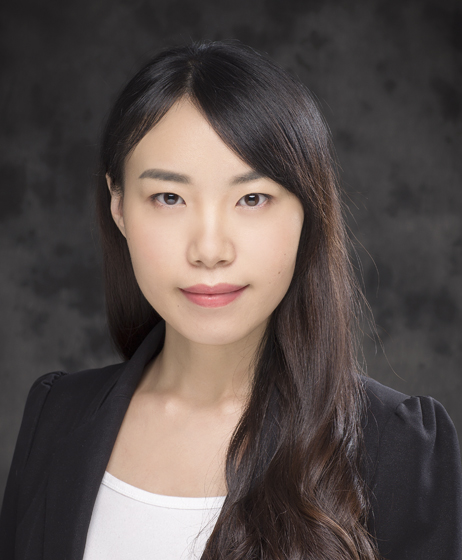Understanding design patent protection

This is an Insight article, written by a selected partner as part of IAM's co-published content. Read more on Insight
Design patents are an important type of patent in China. They have developed rapidly in recent years and have received widespread attention. This chapter will introduce the regulations and practices involved in the prosecution, examination and judgment of design infringements in China.
Brief introduction to design patents in China
According to the Patent Law, ‘design’ refers to the whole or a part of a product; any new design of the shape, the pattern or their combination of a product; or the combination of the colour with the shape or pattern of a product that has high aesthetic appeal and is fit for industrial application.
Designs seeking patent protection in China should:
- relate to the appearance of the product (the whole or part of the product);
- relate to the shape; the pattern; the combination of the shape and the pattern; the combination of the colour and the shape; the combination of the colour and the pattern; or the combination of the colour, the shape and the pattern of the product (colour alone is insufficient for a design patent application)
- be fit for industrial application; and
- be rich in an aesthetic appeal.
In China, there are mainly two types of designs for which an application for patent protection can be made: the appearance of a tangible product in whole or in part, or a graphical user interface.
Table 1 outlines some common questions and answers regarding design patents in China.
Table 1. Common questions and answers
| Question | Answer |
|---|---|
| How long is the term of protection for a design? | 15 years from the filing date. |
| Is partial protection for a design permitted? | Yes, dotted lines and translucent, single-colour covers can be used to reference a part of a design that does not seek protection. |
| Is there a grace period for prior publication by the applicant? | There is a grace period of six months for maintaining novelty to file design applications in China where, within six months before the filing date:
|
| Can priority be requested and how long is the priority period? | Priority can be requested within six months from the date of first filing. |
| Are multiple designs allowed in one application? | No more than 10 similar designs can be submitted in one application. |
| What is the maximum number of drawings in a design application? | No more than 10 similar designs can be submitted in one application, and each similar design should include at least one drawing (six to eight drawings are submitted on average). |
| Are colour drawings permitted? | Yes, colour drawings are permitted to protect the colours of designs. |
| Can the term of protection be extended or renewed? | No, the maximum period of protection is 15 years. |
| Are divisional applications permitted? | Yes, if the application includes several designs, the applicant can file divisional applications on one or more designs. Divisional applications should be filed no later than two months of receiving a ‘Notice of Allowance’ for the original application. |
Impact of China’s accession to the Hague System
On 5 February 2022, the government deposited its instrument of accession to the Hague Agreement Concerning the International Registration of Industrial Designs (the 1999 Act), thereby joining the Hague System.
The Hague System allows design patents to be secured simultaneously in several countries and regions through one application to WIPO. China’s accession to the Hague System means that as of 5 May 2022, individuals who are not residents of China can secure international design protection in China, and companies and designers in China can now seek international protection of their designs in any country covered by the Hague System.
According to WIPO director general Daren Tang:
From the earliest ornamental products made by our Stone Age ancestors to the modern day haute couture we see on runways across the globe, designers enrich, excite and enliven us. Designers are also playing a bigger role in shaping the look and feel of the products we use every day – from household products and mobile phones to virtual designs. China’s accession to the Hague System means that the design community in China will find it easier to protect and bring their designs out of China, and overseas designers will find it easier to move their designs into one of the world’s largest and most-dynamic markets.
Can foreign applicants file Hague applications in China?
The Geneva Act of 2 July 1999 is applicable in China. As long as the requirements of Article 3 of the Geneva Act are satisfied, the applicant can submit a Hague application in China, regardless of the contracting party to which the applicant belongs. For example, if the foreign applicant has a real and effective industrial or commercial establishment in China, they can file a Hague application in China using their foreign information.
If there are several applicants, WIPO provides the following:
two or more parties (whether natural persons or legal entities) may jointly file an international application, provided that each of them is in a position to establish an entitlement through a Contracting Party bound by the same Act or Acts. It is not necessary that the Contracting Party concerned be the same in respect of each applicant, nor is it necessary that the nature of the entitlement (nationality, domicile, habitual residence or establishment) be the same for each applicant. For example, where Applicant 1 is a national of Contracting Party A, bound by the 1999 Act, and Applicant 2 has a domicile in Contracting Party B, also bound by the 1999 Act, these applicants may jointly file an international application.
Requirements for filing a design application
In China, generally a request along with drawings or photographs of the design as well as a brief explanation are required when filing a design application.
The request should contain information such as the name of the product incorporating the design, the creator, the applicant, the patent agency, the patent agent and the contact address.
The drawings or photographs should clearly indicate the design of the product. For example, if the design is three-dimensional and its essential features cover six planes, an orthographic projection displaying six views is required.
The drawings should be made in accordance with the national standards for technical and mechanical drawings regarding normal projections, line widths and section marks. Shadow lining, centrelines, dimension lines and dash-dotted lines cannot be used to show the shape of a design. Two parallel double-dotted lines or natural break lines can be used to show the omitted portion of a long, thin product.
Black and white photographs, as well as colour photographs, are permitted in the design application. The photographs should be clear (ie, no overexposure, reflections, shadows, etc), and the background of the photographs should be plain and should not show anything other than the product incorporating the design.
The explanation should include information such as the title of the product incorporating the design, the use of the product incorporating the design and the essential features of the design. It should indicate the drawing or photograph that best shows the essential features of the design and should also contain specific information that does not fit elsewhere in the application, such as:
- a claim for the protection of the design’s colour;
- the omission of a view from the drawing;
- the main design, if several similar designs are submitted; or
- whether the product is made of a transparent material or a material that creates a particular visual effect.
Examination of industrial designs
In China, the design patent application does not need to undergo a substantive examination, and the examiner will only conduct a preliminary examination on the design application. This means that if an applicant files a design application and designates China via the Hague System, the design application will be granted in China soon after the preliminary examination.
According to Article 23.1 of the Patent Law:
Any design for which a patent is granted shall not be attributed to the existing design, and no entity or individual has, before the date of application, filed an application with the patent administrative department of the State Council on the identical design and recorded it in the patent documents published after the date of application.
During the preliminary examination, the examiner does not usually conduct a search and examination of the novelty and inventiveness of the design; rather, the examiner will assess whether the design application obviously does not meet the requirements of Article 23.1 only on the basis of the content of the application document and the common sense of a typical consumer.
If the design application is regarded as a prior design, the examiner will issue an office action, in which case the applicant can make arguments to prove that the design for which it seeks protection is different from the prior design.
The following will be assessed in the preliminary examination:
- whether the application documents (especially the drawings or photographs) conform to the formal requirements;
- whether the design is obviously contrary to the law or social morality, or is detrimental to the public interest;
- whether the carrier of a design is a product, a handicraft, an agricultural product, a livestock product or a natural product that cannot be produced repeatedly (such products should not be the carrier of the design);
- whether the design is a new aesthetic design fit for industrial application – which means when assessing whether the subject matter is patentable, the appearance of the product rather than its function or technical effect should be taken into consideration – and whether it can be used in industry and may be manufactured in batches;
- whether the design is non-patentable, as would be the case for permanent buildings, bridges, etc; any product that has no fixed shape, pattern or colour; any product that is not visually perceptible; and any work that belongs wholly to the field of fine arts, penmanship or photography; and
- whether the several similar designs in the application are based on the same product, and the other designs and the main design have the same or similar design features (ie, the difference between them lies in slight changes in fine details).
After the preliminary examination, if there are no grounds to reject the design application, the examiner will issue a notification to grant a patent right for the design; otherwise, the examiner will issue an office action, in which case the applicant can make arguments or amendments to eliminate any defects.
Determination of design infringement
The design’s scope of protection is defined by the drawings or photographs, and the brief explanation (especially where protection for the colour is sought).
When judging whether a design patent has been infringed, the following two points are assessed:
- Is the allegedly infringing product of the same or a similar type as the design-patented product?
- Is the appearance of the allegedly infringing product the same as or similar to the design-patented product?
Whether the appearance of the allegedly infringing product is the same as or similar to the design-patented product is assessed on the basis of the general knowledge and cognitive ability of the general consumers of the design-patented product. A comprehensive judgment should be made based on the overall visual effect of the design, and features that do not have an impact on the design’s appearance (eg, the materials used to make the product and the product’s internal structure) should not be considered.
Generally, the following aspects will be considered as having a greater impact on the overall visual effect of the design:
- the parts of the product that are directly observable during normal use, relative to other parts; and
- the design features of the design that differ from existing designs, relative to other design features.
Consideration should also be given to the product’s design space. If the design space is large, it will be considered that general consumers will not usually notice the small differences between the allegedly infringing product and the design-patented product; if the design space is small, it will be considered that general consumers will usually be more likely to notice the small differences between the allegedly infringing product and the design-patented product.
Comment
Applying for design patents is an important means for companies to protect their design creativity. China’s accession to the Hague System means that Chinese applicants can carry out design patent layout and protection around the world more conveniently, and overseas applicants can easily obtain design protection in China by designating China via the Hague System. China’s accession to the Hague System, therefore, provides the convenience of IP protection for overseas companies that want to enter the vast Chinese market and helps to promote the vigorous development of the industrial design field.
In this context, this chapter introduces the definition, the object of protection, the application requirements, the examination practices and information regarding the determination of infringement of design patents in China in the hope of helping readers to better understand this important type of patent in China.







